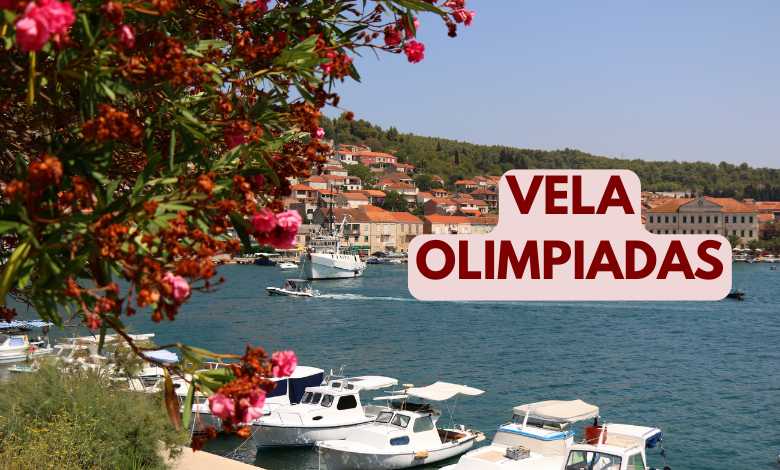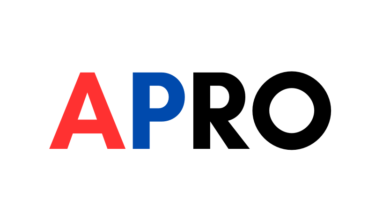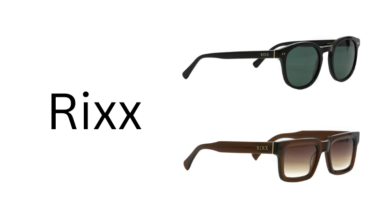Vela olimpiadas Sailing: History, Classes, Rules, and Future of the Sport

If you’ve ever watched the Summer Olympics and seen small boats darting across waves with colorful sails, you’ve witnessed one of the most beautiful yet complex Olympic sports — sailing. It’s not as straightforward as running on a track or swimming in a lane. In sailing, athletes race not just against each other but also against nature itself — the wind, waves, and ever-changing weather conditions.
Olympic sailing (or vela olímpica in Spanish and Portuguese) is a competition where sailors race boats on open water courses. They use the power of the wind, along with skillful steering and sail control, to complete a set route faster than their opponents. It’s a mix of physics, strategy, endurance, and intuition.
I still remember the first time I watched Olympic sailing highlights. At first, I didn’t understand why everyone wasn’t sailing straight toward the finish line. Then I learned about wind angles, tacking, and the clever zig-zag routes that make sailing both technical and unpredictable. Once you understand the logic behind it, the sport becomes fascinating.
A Brief History of Sailing in the Olympics
Sailing made its first Olympic appearance in 1900 during the Paris Games. Interestingly, it was supposed to be part of the very first modern Olympics in 1896, but the event was canceled because of poor weather conditions.
Since then, sailing has been a regular feature, evolving dramatically through the decades.
In the early 1900s, there were no standardized boat designs. Competitors used their own yachts, and races varied widely in distance and rules. Over time, the sport moved toward “one-design” classes, meaning all sailors use identical boats — so victory depends on skill, not equipment advantages.
By the mid-20th century, Olympic sailing had established set classes and clearer rules. Technological innovation also shaped the sport. Wooden hulls gave way to fiberglass, sails became lighter and more efficient, and navigation tools improved.
Today, the sport represents both tradition and modernity. It’s one of the few Olympic events that depends directly on natural elements. Every regatta tells a story of skill, patience, and respect for the environment.
Olympic Sailing Classes and Boat Types
One of the most confusing parts for newcomers is the variety of boat types, or “classes.” Each class represents a different design and set of technical rules.
Here’s a breakdown:
1. Dinghies
Small, light boats used for one or two sailors. Examples include:
-
ILCA (Laser): A single-handed dinghy known for simplicity and physical challenge.
-
470: A two-person boat emphasizing teamwork and coordination.
2. Catamarans
Catamarans have two hulls, making them faster and more stable.
-
Nacra 17 is the Olympic catamaran class — a mixed-gender event that highlights equality and speed.
3. Boards (Windsurfing and Kitesurfing)
-
iQFoil: A modern windsurfing board that “flies” above the water on a hydrofoil. It replaced the RS:X class starting at Paris 2024.
-
Formula Kite: Introduced for Paris 2024, featuring athletes controlling a kite while riding a small board that also uses a hydrofoil.
Each of these classes demands different techniques and physical skills. For example, the ILCA is all about endurance and precision, while the Nacra 17 relies on synchronized teamwork and quick reflexes.
Olympic Classes at Paris 2024
In the 2024 Paris Games, ten sailing events took place — four for men, four for women, and two mixed events. The classes included:
-
ILCA 7 (Men’s)
-
ILCA 6 (Women’s)
-
49er (Men’s Skiff)
-
49erFX (Women’s Skiff)
-
Nacra 17 (Mixed Catamaran)
-
470 Mixed
-
Formula Kite (Men’s & Women’s)
-
iQFoil (Men’s & Women’s)
The variety keeps the competition dynamic, showcasing both tradition (dinghies) and innovation (foiling boards).
Read Also: Hastovenetor: Meaning, Interpretations, Potential, and Future
Rules and Scoring System Explained
At first glance, Olympic sailing races can look chaotic. Boats zigzag in different directions, and it’s hard to tell who’s winning. But once you understand the structure, it makes sense.
1. The Race Format
Each sailing competition consists of several races (called “regattas”).
-
Each race follows a course marked by buoys, usually a triangular or windward-leeward route.
-
All boats start simultaneously, crossing an imaginary start line after the signal.
-
The goal is to complete the course in the shortest time while following all rules.
2. Scoring System
-
Points are assigned based on finishing position: 1 point for first place, 2 for second, and so on.
-
After several races, sailors can discard their worst result (to offset one bad race).
-
The lowest total score wins.
-
The final race, called the Medal Race, counts double points and cannot be discarded. Only the top ten sailors qualify for it.
For example, in the Laser Radial class at Tokyo 2020, competitors sailed ten qualifying races plus one medal race. The final standings were determined by the combined points — showing how consistency matters as much as speed.
3. Conditions and Wind
Wind is both friend and foe. Too little, and races get delayed. Too much, and boats risk capsizing.
Skilled sailors “read” the wind — noticing shifts in direction and strength, using waves and clouds as clues.
In one regatta I watched, a sailor in fifth place noticed a wind gust approaching from the far right. She changed her course while others stayed left — she reached the next buoy first. That’s sailing in a nutshell: observation and instinct.
Olympic Sailing in Recent Editions
Tokyo 2020
At Tokyo 2020, sailing events were held in Enoshima, Japan. The classes included RS:X (windsurfing), Laser, Laser Radial, Finn, 470, 49er, 49erFX, and Nacra 17.
The conditions were challenging — strong currents and unpredictable winds made strategy crucial.
Notable champions included:
-
Matt Wearn (Australia) – ILCA 7
-
Anne-Marie Rindom (Denmark) – ILCA 6
-
Hannah Mills and Eilidh McIntyre (UK) – 470
-
Ruggero Tita and Caterina Banti (Italy) – Nacra 17
Paris 2024
For the 2024 Games, sailing events were held in Marseille, along the Mediterranean coast. The location offered a mix of light sea breezes and strong Mistral winds — a real test for athletes.
The big change was the inclusion of iQFoil and Formula Kite, both featuring hydrofoil technology that lets boards lift above water and “fly.”
These new classes attracted younger audiences and modernized the sport’s image.
Notable Athletes and Countries
Sailing might not always dominate headlines, but it has produced some legendary athletes.
-
Ben Ainslie (UK): The most decorated Olympic sailor with four gold medals and one silver.
-
Robert Scheidt (Brazil): Known for his technical mastery, with five Olympic medals across Laser and Star classes.
-
Hannah Mills (UK): Multiple Olympic gold medalist and world champion, also active in sustainability projects.
-
Torben Grael (Brazil): Five-time Olympic medalist and a sailing icon in Latin America.
Countries with the strongest Olympic sailing traditions include the UK, Australia, Brazil, and New Zealand — all nations with rich maritime cultures.
Training and Preparation for Olympic Sailing
Olympic sailors are not just athletes — they’re tacticians, meteorologists, and engineers rolled into one.
Training involves several layers:
-
Physical fitness: Core strength, balance, and endurance are essential. Handling sails and balancing in strong winds requires serious conditioning.
-
Technical mastery: Understanding boat mechanics, rigging, and sail trim.
-
Tactical awareness: Reading wind shifts, predicting currents, and knowing when to take risks.
-
Mental resilience: Long days on the water can be draining. Focus and patience make the difference between gold and silver.
Some sailors also train using simulators or video analysis. Others rely on experience — hours spent at sea under different conditions.
A coach once said, “You can’t control the wind, but you can control your boat.” That captures the heart of sailing.
Common Challenges and Interesting Facts
Sailing is unique among Olympic sports because no two races are ever the same. The variables — wind, current, temperature, and even sunlight — constantly change.
Challenges include:
-
Unpredictable weather: Events can be postponed, shortened, or canceled.
-
Equipment tuning: Small adjustments in sail tension can make a huge difference.
-
Physical fatigue: Races last 30–60 minutes, often several times a day.
-
Pressure: Reading the wind correctly in a split second can decide the medal.
Interesting facts:
-
Sailing has been part of the Olympics since 1900, except for 1904.
-
Women’s sailing events were first included in 1988.
-
The youngest Olympic sailing gold medalist was Denmark’s Paul Elvstrøm, who won his first gold at 20.
The Future of Olympic Sailing
Sailing is evolving fast. The push toward equality and sustainability is reshaping the sport.
-
Gender balance: Paris 2024 achieved near parity with mixed events like the Nacra 17 and 470 Mixed.
-
Technology: Foiling boards and GPS tracking make races faster and easier to follow.
-
Sustainability: Modern regattas emphasize eco-friendly materials, waste reduction, and ocean conservation.
Looking ahead, Los Angeles 2028 could bring more innovations — possibly more foiling classes and even virtual broadcast enhancements.
What’s clear is that sailing remains one of the most intellectually and physically demanding Olympic sports. It’s about harmony between human skill and nature’s forces.
Conclusion
Olympic sailing blends precision, courage, and respect for the environment. It’s a sport where experience meets instinct, and where the smallest decision — a change in sail angle, a wind shift spotted early — can win a medal.
From its beginnings in 1900 to the high-tech foiling boards of today, sailing continues to inspire athletes and fans around the world. Whether you’re a casual viewer or an aspiring sailor, understanding the sport deepens your appreciation for what these athletes achieve on the water.
Frequently Asked Questions
1. When did sailing first appear in the Olympics?
Sailing debuted in 1900 at the Paris Games.
2. How do sailors win in Olympic sailing?
They compete in multiple races, earning points based on placement. The sailor or team with the lowest total points wins.
3. What boats are used in the Olympics?
Classes include ILCA (Laser), 49er, Nacra 17, iQFoil, Formula Kite, and the 470.
4. Where were the 2024 Olympic sailing events held?
In Marseille, France, along the Mediterranean coast.
5. Who is the most successful Olympic sailor?
Ben Ainslie from Great Britain, with four golds and one silver.



